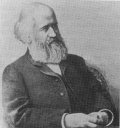Telekinesis
Let us deceive with words the critics regret...8
Although not written about the paranormal, this quote from poet Anne Sexton is a fair description of telekinesis (TK) and its counterpart, psychokinesis (PK). For decades, critics and skeptics have scoffed at the idea of telekinesis, but that may change soon.

Circa 1890, Alexandr N. Aksakof (1832-1903) coined the word telekinesis to describe the paranormal movement of objects by the deceased. However, because the antics of tricksters and swindlers soon discredited telekinesis, Henry Holt replaced the term with his word, psychokinesis in 1914. To legitimize his 1934 experiments, renowned parapsychologist J. B. Rhine chose Holt’s alias over the term telekinesis3.
Today, telekinesis is regarded as a part of psychokinetic research. Psychokinesis includes both the movement and the deformation of objects (e.g. spoon bending). Telekinesis describes only movement at a distance (e.g. moving a spoon from one side of a table to the other) as Aksokof originally intended.
Yet, today, telekinesis continues to be the subject of skepticism and ridicule. In a 1995 report in Scotland’s Daily Record, author Bob Shields6 recorded the final moments of the World Snooker Championship.
“The theory of telekinesis... was finally debunked. At least a million Scots must have been willing Stephen Maguire’s final black in frame 17 to drop into the pocket... The ball stayed out. Then for the next twenty minutes, the same million thought waves [beamed] on O’Sullivan—willing him to miss something. All his shots went in.”
All jokes aside, modern scientists are working on linking medical technology with telekinesis. In an effort to provide more mobility for victims of physical impairments such as stroke and spinal injuries, they anticipate that if telekinesis were possible, it would result in a profound blessing for paralyzed patients. Once proven, the ability might also be tapped for such complex uses as driving automobiles or even enabling pilots to control aircraft.
A team from the California Institute of Technology implanted arrays of electrodes in three monkeys. Their premise was to draw on the “high order” brain cells involved in planning and motivation; the primal signals that initiate physical motion (i.e. the movement of a limb). The goal was for the monkeys to operate a computer cursor through telekinesis. Team member Professor Richard Anderson explained, “We have him positioning a cursor at a particular goal location on a computer screen and then decode his thoughts. He thinks about reaching there, but doesn’t actually reach and if he thinks about it accurately, he’s rewarded.1”
In a similar study conducted at Duke University by Dr. Miguel Nicolelis and colleagues, monkeys first used a joystick and a computer screen to move a mechanical arm, which was located in an adjacent room. When a monkey met with consistent success, the team switched control of the computer cursor and arm to a computer that processed the signals from wire electrodes implanted in the monkey’s brain. Although Dr. Nicolelis believes the procedure would also work on humans, electrodes implanted in the monkeys number as many as 320. Until the team can perfect a wireless system, the awkwardness as well as the aesthetics of electrode placements inhibits human studies.
Until then, as author/artist Kurt Vonnegut5 quipped, “Those who believe in telekinesis, raise my hand!”
<http://www.highbeam.com/doc/1G1-109127297.html>.
2. "Monkey see, monkey do; Neuroscience.(Telekinesis)(research project trains monkeys to move robotic arms with their thoughts)." The Economist (US). Economist Newspaper Ltd. 2003. HighBeam Research. 22 Mar. 2009 <http://www.highbeam.com/doc/1G1-109127297.html
3. "psychokinesis." The Columbia Encyclopedia, Sixth Edition. 2008. HighBeam Research. 22 Mar. 2009 <http://www.highbeam.com/doc/1E1-psychokines.html>.
4. Douglas Harper. “Telekinesis.” Online Etymology Dictionary. November 2001. 23 March 2009. <http://www.etymonline.com/index.php?term=telekinesis>.
5. Kurt Vonnegut. The Quotations Page. 2007. 23 March 2009. <http://www.quotationspage.com/forum/redirect/quote/39699.html?num=39699&sid=424334369540ef683ddeaf92bfa84111>
6. "Bob Shields: The Days of Stephen Hendry Entering the Crucible on a Stairlift Are a Long Way Off," Daily Record (Glasgow, Scotland) 19 Apr. 2005: 13, Questia, 22 Mar. 2009
<http://www.questia.com/PM.qst?a=o&d=5009291238>.
7. Anne Sexton. “The Errand.” The Complete Poems: Anne Sexton. Mariner Books. New York: Houghton Mifflin, 1999. 588. 25 Mar 2009 <http://www.amazon.com/Complete-Poems-
Anne-Sexton/dp/0395957761/ref=sr_11_1?ie=UTF8&qid=1238017824&sr=11-1#reader>.
